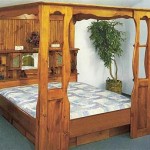Can You Make Your Own Mirror?
Creating a mirror involves more than just having a reflective surface. A true mirror requires a smooth, highly reflective coating applied to a suitable substrate. While achieving the quality and clarity of commercially produced mirrors can be challenging, making a basic reflective surface is possible with several methods.
Silvering: The Traditional Approach
Traditional mirror making relies on silvering, a chemical process that deposits a thin layer of silver onto glass. This process involves preparing a sensitizing solution, typically containing silver nitrate, and then introducing a reducing agent, such as glucose or formaldehyde. The reducing agent causes the silver ions in the solution to precipitate onto the glass surface, forming a reflective layer. This delicate process requires precise measurements and careful handling of chemicals.
Modern Silvering Alternatives
While silvering remains a viable method, several modern alternatives offer similar results with potentially less hazardous materials. These alternatives often involve vacuum deposition, a process where a thin layer of reflective material, such as aluminum, is vaporized and allowed to condense onto the glass in a vacuum chamber. This process creates a highly uniform and durable reflective surface. However, access to vacuum deposition equipment is typically limited to industrial settings.
Using Reflective Films as a Simplified Method
For a simpler approach, applying reflective films to glass or another smooth substrate offers an accessible alternative. These films, often made from Mylar or other polymers coated with a reflective layer, can be readily purchased and applied to a clean surface. While these films might not achieve the same level of reflectivity as silvered or vacuum-deposited mirrors, they provide a practical solution for less demanding applications.
Choosing the Right Substrate
The substrate, or base material, plays a crucial role in the quality of the finished mirror. Glass is the traditional choice due to its smoothness and transparency. However, other materials like acrylic or polished metal can also serve as substrates. The choice of substrate depends on the intended application and desired durability of the mirror.
Preparing the Substrate for Coating
Regardless of the chosen coating method, proper substrate preparation is essential for achieving a good reflective surface. The substrate must be thoroughly cleaned and free from any dust, grease, or other contaminants. Even minor imperfections can affect the adhesion and uniformity of the reflective coating, leading to distortions or blemishes in the final product.
Safety Precautions During the Process
When undertaking any mirror-making process, especially those involving chemicals, appropriate safety precautions are paramount. Always wear protective gloves, eye protection, and work in a well-ventilated area. Familiarize yourself with the safety data sheets (SDS) of any chemicals used and dispose of them properly according to local regulations. Even with simpler methods like applying reflective film, care should be taken to avoid cuts from sharp edges.
Understanding the Limitations of Homemade Mirrors
While making a basic reflective surface is relatively achievable, replicating the quality of commercially produced mirrors is challenging. Homemade mirrors might have imperfections, such as slight distortions or uneven reflectivity. The durability of the reflective coating might also be lower compared to professional mirrors. Understanding these limitations sets realistic expectations for the final product.
Exploring Alternatives for Specific Applications
Depending on the intended use, alternative solutions might be more appropriate than attempting to create a traditional mirror. For simple reflective decorations, readily available reflective materials like metallic paper or foil can suffice. For scientific applications requiring precise reflectivity, specialized optical components are necessary and should be sourced from reputable suppliers.
Considering the Cost and Effort Involved
Before embarking on a mirror-making project, it's important to consider the cost of materials, equipment, and the time required. For simpler applications, using readily available reflective materials might be the most cost-effective solution. For more elaborate projects, the cost of chemicals and equipment for silvering or other coating methods can be significant. Evaluating the investment against the desired outcome helps determine the most suitable approach.

How To Make A Mirror With Pictures Wikihow

How To Make Your Own Mirror A Rustic Diy Project Ideas For The Home

How To Make A Mirror With Pictures Wikihow

How Are Mirrors Made And To Make One At Home Metal Men Recycling

How To Make Your Own Mirror A Rustic Diy Project Ideas For The Home

Homemade Mirror Paper How To Make At Home Diy Epaper Sajal S Art

Diy Full Length Mirror Maker Gray

Diy How To Make A Squiggle Mirror City Chic Decor

Make Your Own Diy Gilt Mirror A Tutorial

Diy Fluted Wall Mirror Persia Lou








